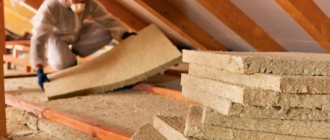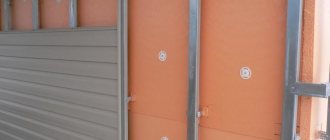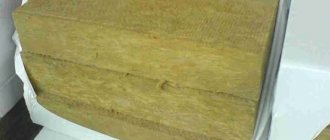To preserve heat in winter, plastic windows are insulated.
Particular attention should be paid to the window sill. It very often turns out to be a source of cold penetration due to the flaws in it.
If you properly insulate the window sill, it will significantly reduce heat loss in the room and save heating costs.
We will tell you further about how to insulate the window sill of a plastic window.
Why is it necessary to insulate a window sill?
Rice. 2. Insulating the window sill will eliminate drafts
Most Russians believe that the issue of room insulation can be solved by installing PVC windows. However, to effectively retain heat in a residential or office space, absolutely all elements of the window opening must be used. This is especially true for the window sill. It is this element of the window structure that is considered the most vulnerable. Therefore, if the temperature in the room drops, first of all, you should check the area where the window frame adjoins the window sill. If cold air comes from there, causing drafts, then residents urgently need to address the issue of insulating this particular window structure.
Determining critical places
To effectively insulate plastic windows, you must first understand where the seal is broken. The only thing you can immediately remove from the list of suspects is the frame: multi-chamber plastic is a good heat insulator, it does not dry out, unlike wood.
Cold air can penetrate through the following structural elements:
- clamping elements that tend to loosen over time;
- a detached glazing bead that holds the glass unit in place;
- worn out seal;
- polyurethane foam, if it was applied in violation of technology;
- windowsill;
- slopes.
A double-glazed window rarely causes a violation of thermal insulation (the exception is its depressurization), but it can also be additionally insulated. “Extra” heat in winter will not hurt.
It is easy to identify leaky window elements - just run your palm along and across the entire structure, and you will feel that there is a decent amount of wind in some places. Some people recommend using a lighter for this purpose. If you light a flame and pass it around the perimeter of the window, maintaining a safe distance, it will tilt in those places where there is even a small draft. Be extremely careful with this method!
As a rule, work on insulating a plastic window can be done with your own hands. The exception is when it is necessary to insulate the slopes from the outside, and the apartment is located above the second floor. You need to be prepared that comprehensive insulation may be needed if several zones of warm air leaks are found, but first things first.
It is very important to find out exactly how cold air gets inside the room. To do this, you need to take a lighter and run it around the entire perimeter of the plastic window. Pay special attention to the places where the frame meets the wall. The window sill and slopes are also worth checking. If you don't have a lighter, use an open palm.
Important! Pay special attention to the fittings. Very often, domestic companies use low-quality components to save money.
Required Tools
Rice. 3. Tools for insulating the window sill
To insulate plastic window sills, you may need the following tools:
- hammer;
- perforator;
- chisel;
- putty knife;
- building level;
- fine-toothed hacksaw with a hard and long blade;
- knife.
During installation and dismantling work, you may need a broom or a brush with stiff bristles, as well as a vacuum cleaner to clean the room.
Tips for use
To avoid any difficulties with the window sill during operation, you should initially take a responsible approach to the choice of the manufacturing company. If a high-quality system is initially selected, it will definitely last for a long time. It is worth performing the maintenance work recommended by the manufacturers annually, taking all necessary preventive measures. Do not violate the operating rules and overload the window sill.
By following the listed recommendations, you can significantly increase the service life of the structure and prevent heat loss.
Removing a plastic window sill
Rice. 4. The base for the window sill after dismantling
Insulation of PVC window sills always begins with their dismantling. To do this, it is common to use two main methods.
In the first case, the master must knock down the layer of plaster that is located under the slab structure as carefully as possible. The plaster must be knocked down to the very base of the wall. Due to this, the master will have open access to the base of the structure. Accordingly, he will be able to quickly detect all existing chips and cracks. Dismantling will also require breaking off the plaster at the contact points between the window sill and the slope.
To complete the dismantling work, it is necessary to cut off the layer of polyurethane foam that remains after installing this structure. The cut should be made as carefully as possible, since during the work the master can scratch the plastic. After completing all the processes described above, all that remains is to slowly pull the structure towards you and down. You should not make extremely large efforts to dismantle the PVC window sill, as there is a risk of damaging the plastic sheet.
The second dismantling method involves using a fine-toothed hacksaw. The blade of such a hacksaw should be hard and long. To dismantle the structure, a hacksaw is inserted under the blade, after which the cutting of the polyurethane foam begins. At the next stage of dismantling work, the sealant is cut on the sides of the slopes. After completing these operations, you can slowly and carefully remove the window sill by first lifting it up and then pulling it towards you.
After dismantling work, care must be taken to clean the window base. To do this, use a brush with stiff bristles and a regular household vacuum cleaner. After cleaning, you will be able to see all the existing cracks and chips that need to be sealed with foam or acrylic sealant.
Possible difficulties and errors, their consequences
When insulating window sill boards, it is necessary to avoid process disruptions:
- After installing the canvas, there must be sufficient load on it. This is necessary so that the window sill maintains a horizontal position. Otherwise, the foam will be able to lift one of the sides and warp the canvas.
- If there are two windows in a room on the same wall, then insulation should be done simultaneously. Window sills should be placed not one at a time, but in combination. To do this, pull the cord and align the canvas along it. Otherwise, the level and depth of installation of window sills will vary.
Before starting work, you should carefully read the instructions. This will help avoid mistakes and mistakes.
Choosing material for window sill insulation
Rice. 5. The quality of window sill insulation will depend on the selected material
Most often, polyurethane foam is used to insulate PVC window sills. It can be used both to seal individual cracks and along the entire length of the base of the window frame. Better insulation can be obtained by using acrylic sealant. It is applied from a tube to all existing joints of the window sill with the frame.
Polyurethane foam
Rice. 6. Applying foam to insulate the window sill
To install a PVC window sill, it is necessary to cover its entire perimeter with mounting foam, which is a polyurethane foam sealant in aerosol packaging. Polyurethane foam is characterized by resistance to UV radiation and good adhesion.
The installation process involves drawing 2 intersecting lines in the center, which will simplify the process of adhesion of the slab to the base of the window. Next, all that remains is to attach the canvas to the base of the window opening. To check the evenness of the installation of the structure, you can use a building level.
When using polyurethane foam there is one very important nuance. This material tends to expand within 24 hours after application. Therefore, to prevent the window sill from moving, it is recommended to securely fix it for at least one day. For this purpose, you can use the most ordinary 3-liter jar of water. In addition, the use of polyurethane foam must be carried out in accordance with the strict requirements of the manufacturer indicated on the packaging of this product. In particular, the temperature regime of the surrounding space must be observed. Almost all manufacturers recommend using their products at an ambient temperature of at least 18 °C.
Acrylic sealant
Rice. 7. Acrylic sealant
An alternative to mounting foam is acrylic sealant. It is a non-toxic polymer material intended for both indoor and outdoor use. Among the main advantages of acrylic sealants are affordable cost, ease of use, high level of adhesion, paintability, resistance to ultraviolet radiation and fire safety.
The use of acrylic sealant allows you to obtain a better and more comprehensive seal. The sealant must be applied to small cracks and joints. During the application of sealant, excess may occur. In order to remove them, it is enough to use an ordinary spatula or rag. The base of the window opening should be treated with a primer. In some cases, putty is used to level the base, which should be applied in one layer, having previously aligned the beacons to the building level.
Types of insulation
For thermal insulation of window sills, various types of thermal insulation materials are used. The choice of the appropriate option directly depends on the problems encountered. The most widespread are:
- polyurethane foam. With its help, various cracks are sealed. The material freely penetrates into various cracks and cavities, increasing the heat and sound insulation characteristics of the structure. When using it, it should be taken into account that under the influence of sunlight the foam begins to gradually crack and then collapse;
- silicone based sealant. With its help you can eliminate small gaps. At a relatively low cost, the material has good water-repellent characteristics;
- mineral wool. Thanks to its special structure, it has high thermal insulation properties. When using it, it is possible to maintain heat in the room, preventing the penetration of cold from outside, even in fairly severe frost. When using mineral wool, the sound insulation properties of the window structure are improved;
- penoizol. The special design of the material allows it to retain its properties for at least 30 years. The thermal insulation layer formed with its help retains its shape well, since penoizol does not expand under significant temperature fluctuations. It is quite difficult to achieve thermal insulation properties on your own: you will have to turn to professional builders for help;
- polyurethane foam. The porous filler of artificial origin demonstrates high technical characteristics. The raw materials used are polyol and polyisocyanate, which are subjected to special processing in a high-pressure apparatus. Using this insulation yourself is associated with a number of difficulties. As a rule, only professionals insulate window sills using polyurethane foam;
- Styrofoam. A classic material with low weight and affordable cost. Has good thermal insulation properties. After insulating the opening, it must be plastered.
Installation of a plastic window sill
Rice. 8. Diagram of a standard PVC window sill
Once the surface of the window frame is ready, the process of installing the window sill begins. For this purpose, the canvas must be attached to the base of the window structure. To prepare wooden supports of the required thickness, measure the actual distance from the base to the bottom of the window slab. Wooden supports are necessary to ensure the design rigidity of the canvas during its operation. All external and internal dimensions can be measured with an ordinary tape measure.
After the plastic window sill is attached to the base, polyurethane foam or acrylic sealant is used. In order to avoid the formation of so-called “cold bridges”, it is necessary to close the joint between the inner surface of the PVC window sill and the mounting profile. Then, to better fix the wooden supports, polyurethane foam is used again. The last stage of installation is foaming the installed canvas and the external joint of the wall.
Cover with sealant
This method is suitable if the gap between the window sill and the window frame is not very large . In addition, compared to other methods of combating drafts, this is the cheapest.
Defects are eliminated using a transparent sealant. Before using it, the gap should be cleaned of dust and dirt, degreased, and dried.
The gap between the frame and the window sill must be cleaned of dirt
Then, using the tube nozzle, apply the maximum possible amount of the substance until it is completely filled.
For the easiest way to eliminate a defect, use a sealant
To get a beautiful seam, run the edge of a 10-ruble coin along it. Do this in a continuous motion to avoid crooked seams.
The advantage of this method is that all the work takes a matter of minutes. Disadvantage: fragility. After two years, the sealant begins to peel off and darken.
Joint processing
Rice. 9. Finishing the slope in the “section”
In order to give the insulated window sill a finished look, the slopes are plastered. To do this, you can use either cement mortar or regular dry mixture, which can be applied with a spatula. After the mixture has dried, the final coating of the slope is carried out. To give the slope a finished look, the finishing coating is rubbed down with sandpaper. In order to ensure an aesthetically beautiful appearance, the plastered slopes can be painted, and the wallpaper peeled off during dismantling can be glued back.
How to insulate a plastic window sill from the inside
Rice. 10. Insulation of PVC window sill from the inside
Before proceeding with the internal insulation of a plastic window sill, it is necessary to determine its “weak point”. In other words, the master must understand where the draft is coming from. Most often, the greatest heat loss is observed at the joints between the plastic elements of the window and the window sill. “Weak spots” can also be cracks and cracks formed as a result of thermal factors and mechanical loads.
To seal existing cracks, you need to remove the old foam and apply sealant along the entire length of the base of the window frame. This material is able to penetrate deep into the gap and completely seal it.
No. 3. Debugging the clamping mechanism
House shrinkage and weather factors can lead to slight distortion of the window sashes and slight deformation of the sealing rubber. This leads to deterioration of thermal insulation, but in this case, returning the former tightness is a matter of a couple of minutes, however, knowledge of the design of a plastic window and skills in working with tools will be needed.
The clamping mechanism can be adjusted using special eccentrics located along the perimeter of the sashes. To ensure a tighter fit of the sash, the eccentric must be turned clockwise using a 4 mm hex key. Focus on the serif located on each such element. When it is directed towards the street, the pressure is weakened; when it is directed towards the seal, it is strengthened. The video shows everything well.
adjustment of the hinges , which also have their own mechanism responsible for the pressure density, helps to insulate a plastic window Here the regulation is carried out using a hexagon. You should follow a simple rule: if the tongue is pushed out strongly, then the sash fits well. To pull it out, you need to turn the hex counterclockwise if the hinges are on the left, and clockwise if on the right.
Things are even simpler with glazing beads . It is enough to pry off the old, loose glazing bead with a thin spatula, and install a new one in its place, which can be bought from the same company that sold and installed your windows.
After adjustment, check whether the tightness of the structure has improved using your palm or a lighter. If everything is done correctly, but there is still a draft, you will most likely have to change the seal.
How to insulate a plastic window sill from the outside
Rice. 11. Insulating a plastic window sill from the outside will help get rid of drafts
External insulation of plastic window sills consists of finishing the ebb and window slopes on the street side. If these elements of a plastic window are not insulated, then the cold will seep into the room through the cracks at the joints of the window frame and the window sill. In addition, the lack of external insulation often leads to the development of mold on the lower surface of this structure.
For external insulation, it is not enough to use polyurethane foam and cover the cracks with plaster. It is not advisable to use these materials outdoors, since under the influence of negative environmental factors they will gradually begin to crack and collapse. Therefore, for external insulation, a material such as polystyrene foam is most often used. Sheets of this material should be glued to the surface of the outer slope using special glue. A reinforcement mesh must be attached to the top. To give a finished look, the slope should be plastered and, if necessary, painted in the desired color.
Closing the gap with a profile
This method is based on creating additional protection for the sealed seam using a plastic profile.
For work you will need the following materials:
- Transparent silicone sealant;
- Stationery knife, sharp scissors;
- Plastic profile in internal corner configuration.
Armed with everything you need, get to work.
Algorithm of actions
- First, measure and cut the profile to the length of the window frame with a margin of 2-3 cm.
- Then cut off its perforated part so that there is a distance of about 1 cm from the curved plate, and 2 mm from the bend of the right angle.
The profile cutting line must be sharpened - Using a utility knife, sharpen the cutting line by scraping off the corners on both sides. This is done so that this part of the profile easily fits into the crevice, thereby creating a barrier for air entering the room.
- Make holes in the lower corners of the window with a depth of one to one and a half centimeters.
Holes must be made in the lower corners of the window - Clean the joint between the frame and the window sill from debris, wash, degrease, and wipe dry.
The joint between the frame and the window sill must be clean and free of grease. - Seal the gap by filling it with caulk.
The gap is sealed with sealant - Apply an even layer of sealant into the holes made and onto the joint.
- Apply a thin layer of sealant to the profile, insert one end into the hole, and insert the pointed edge of the cutting line into the slot.
The profile is installed in the joint between the window and the window sill - This way the entire profile is adjusted. Its opposite edge is inserted into the second hole.
- Press the corner tightly and hold for several minutes for better fixation.
- Sealant that has squeezed out can be carefully removed after hardening.
The disadvantage of this method is that it is labor-intensive and time-consuming. However, the result is impressive: a beautiful, durable corner in place of the black gap.
Now you know exactly what to do when it blows between the window sill and the plastic window. But sometimes this knowledge is not enough, since the source of the draft may be under the windowsill. A completely different method will be used here.
How to insulate a plastic window sill on a balcony or loggia
Rice. 12. Scheme for insulating a window sill on a balcony or loggia
To insulate a window sill on a loggia or balcony, preliminary thermal insulation of the outer wall should be carried out. It is advisable to install the insulation from the outside, but this is almost impossible to do on loggias and balconies. Therefore, insulation in these rooms is usually carried out from the inside. Installing insulation will reduce heat loss on the balcony, thereby ensuring a comfortable microclimate throughout the living space.
Additionally, the PVC window sill itself can be thermally insulated. For this, polyurethane foam or acrylic sealant is used.
No. 4. Replacing the seal
Ideally, a rubber seal can last quite a long time, but for this to happen, certain conditions must be met. According to the operating rules for plastic windows, the seal must be regularly lubricated with special substances, but which of us does this? So it turns out that after 5 years the rubber dries out and begins to let in the cold breeze from the street.
Procedure for replacing the window seal:
- removing the bead;
- dismantling the lining and glass unit;
- dismantling a worn seal;
- installing a new seal through the groove. It is better to cut the tape in advance, which is 3-5 cm longer than the required length. The new seal is placed in its proper place, while acting as carefully as possible and without straining the material. The excess is carefully cut off. If desired, and for guarantee, the seal can be additionally fixed with adhesive;
- installation of double-glazed windows, linings and glazing beads. Glazing beads are fragile parts, so they must be removed and installed with extreme caution so as not to break them. Otherwise you will have to buy new ones.
The seal, which is located along the contour of the sash, may also need to be replaced. In this case, it is better to remove the sash. First, the decorative overlays are removed from the hinges, and then the pin is pulled out of the hinge using a mounting handle or screwdriver. All that remains is to carefully remove the sash, and only then it is very easy to remove the old seal from it.
It is better to start installing a new seal from the top of the sash, gently pressing it, but not stretching it. It is better to secure the beginning and end of the sealing tape with glue. All! All that remains is to hang the sash back: you can install the pin with your bare hands, and then return the decorative trim to its place. The video shows and describes everything very well.











